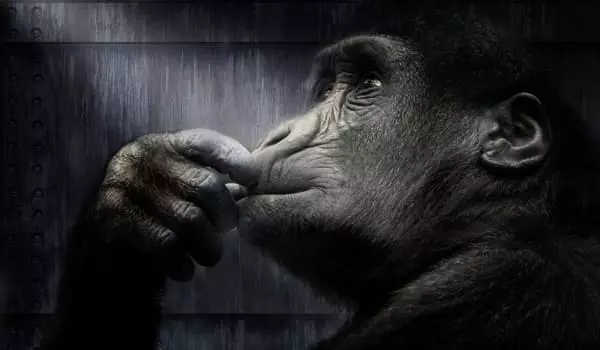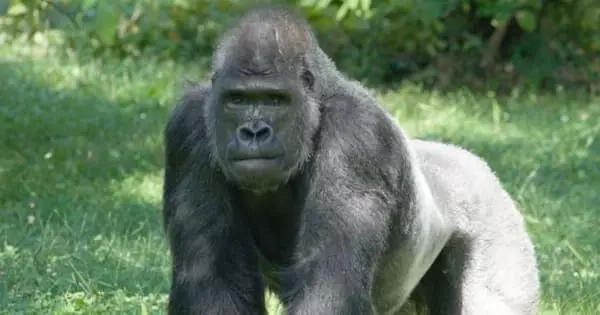Many animals recognize the voices of their own species, and some can recognize the voices of other species, such as humans. However, it has been discovered that some animals, such as gorillas, can not only recognize familiar voices but also associate those voices with pleasant or unpleasant memories. The University of Georgia’s new study is the first to show that gorillas can recognize familiar human voices based on their relationship with the speaker.
The researchers discovered that when captive gorillas heard the voices of people they didn’t know or with whom they’d had negative interactions, they reacted negatively. Their reaction suggests that the apes recognized who the voices belonged to, as well as the nature of their relationship with those people. Although this study was limited to gorillas at Zoo Atlanta, the findings, which were published in the journal Animal Cognition, have broader implications for the captive animals’ wild cousins.
“I mostly worked with wild gorillas, and one disadvantage of working with wild primates is that the habituation process can make them much more vulnerable to hunters because they become accustomed to seeing and hearing people,” said Roberta Salmi, lead author of the study and director of the Primate Behavioral Ecology Lab in the Franklin College of Arts and Sciences. “There is still hope if they can distinguish between people.”
Animals can recognize voices
A wide range of animals appears to be capable of recognizing and distinguishing between voices of the same species. Some, however, can do the same with other species. “Babies, for example, can recognize their mothers’ voices as well as their scent. That is hardwired into animals “Salmi stated. “We know that in the wild, some monkeys form specific associations with individuals of other species.”
I mostly worked with wild gorillas, and one disadvantage of working with wild primates is that the habituation process can make them much more vulnerable to hunters because they become accustomed to seeing and hearing people. There is still hope if they can distinguish between people.
Roberta Salmi
It’s a survival strategy. If a monkey hears and recognizes a known individual’s distress call, they know something is wrong and can try to hide or flee danger. However, it is unclear whether undomesticated animals can recognize individual humans.
According to studies, dogs and cats can tell the difference between their owner’s voice and other people’s voices. They can even detect changes in tone, which is why your dog looks so guilty after knocking over the garbage can. Rover isn’t actually feeling guilty. Dogs and cats, on the other hand, have been domesticated for centuries, resulting in a close bond between people and their companion animals.

Animals in close proximity to humans, such as crows, pigeons, and even wild elephants, have been shown to distinguish between familiar and unfamiliar voices. These studies suggest that being able to distinguish voices and assess the threat level may be important for animals that are exposed to humans on a regular basis.
Salmi and her colleagues observed that the gorillas reacted negatively to the presence of specific people who entered their indoor enclosure. The animals appeared to become agitated in the presence of veterinarians and one maintenance worker in particular. However, it was unclear whether the animals were simply reacting to seeing the people.
Apes may gauge threats by the familiarity of human voices
Over the course of six months, the team played audio recordings of three groups of apes: long-term keepers who had known and worked with the gorillas for at least four years and had positive relationships with them; people the apes knew and had negative interactions with, including veterinarians and the maintenance worker; and people who were unfamiliar to the animals. All of the participants said the same thing: “Hello and good morning. Hello there, “This is how keepers usually greet the gorillas.
The apes’ reactions to their keepers’ voices were minimal. When the gorillas heard the voices of people they didn’t know or with whom they’d had negative experiences, they showed signs of distress, such as increased vigilance and vocalizations.
“One of the first things we noticed was something that also happens in the wild: if they heard anything that sounded threatening or unfamiliar, they stopped what they were doing and focused their attention on it,” Salmi explained. “It’s something we do as well. If it’s not a threatening sound, I go about my business. If I hear someone in my house, I immediately stop what I’m doing to find out what’s going on.”
It’s the first sign of vigilance for gorillas. When the apes in the study heard unfamiliar voices or the voices of people with whom they’d had negative interactions, they stopped eating their treats or doing whatever else they were doing and began looking toward the sound to determine whether the voices were a threat. It was unclear whether the gorillas regarded the strangers as dangerous as the veterinarians and maintenance workers did.
“Some primates can tell the difference and react differently to humans depending on whether they are hunters or researchers,” Salmi explained. “It would be extremely beneficial if wild gorillas could distinguish between people who behave differently not only by sight but also by voice. It would put my mind at ease to know that researchers aren’t making gorillas more vulnerable to poachers.”















